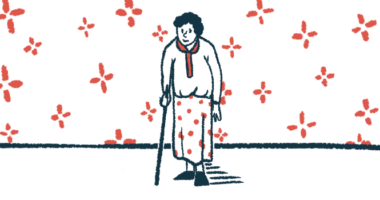Tavneos can help older AAV patients recover from kidney failure
4 treated patients improved kidney function, reduced prednisone need

Tavneos (avacopan) improved kidney function and reduced the need for the glucocorticoid prednisone in four older patients who had signs of kidney failure due to ANCA-associated vasculitis (AAV), researchers in Canada report.
While Tavneos may help patients enter into remission without the harmful side effects of glucocorticoids, “more study is required to understand the short-term and long-term impacts of [Tavneos] on kidney function in this subgroup of patients,” researchers wrote.
Their report, “Use of Avacopan in Patients With Antineutrophil Cytoplasmic Antibody-Associated Vasculitis and Estimated Glomerular Filtration Rate <15 ml/min per 1.73 m2,” was published as a research letter in Kidney International Reports.
Tavneos approved in combination with other treatments for severe AAV
Tavneos is approved for use in combination with other standard medications, including glucocorticoids, in adults with severe active granulomatosis with polyangiitis or microscopic polyangiitis, the two most common types of AAV.
Available as oral capsules given twice daily, Amgen’s Tavneos blocks the receptor for C5a, a complement protein, helping to ease the symptoms of AAV. In AAV, the immune complement cascade goes awry and contributes to the small blood vessel inflammation — including in the kidneys — that characterizes the disease.
Data from the Phase 3 ADVOCATE clinical trial (NCT02994927), which supported Tavneos’ approvals, showed the therapy was superior to prednisone in promoting long-term remission.
Tavneos also outperformed the glucocorticoid at improving kidney function, even in patients with severe kidney disease, while reducing glucocorticoids, which are linked to serious side effects with long-term use.
The ADVOCATE study, however, did not include patients with kidney failure, as indicated by an estimated glomerular filtration rate (eGFR), a measure of kidney function, below 15 mL/min/1.73 m2.
Now, the researchers described their experience using Tavneos on four patients with eGFR values no greater than 10 mL/min/1.73 m2. All entered into remission after starting on Tavneos, with signs of recovery from kidney failure.
First patient: Woman, 76, with history of chronic kidney disease
The first patient was a 76-year-old woman with a history of chronic kidney disease who went to the hospital because of nosebleeds and not feeling well.
Her eGFR was 9 mL/min/1.73 m2, her urine tested positive for blood and proteins — a sign of kidney damage — and a kidney biopsy confirmed structural tissue damage. Blood testing revealed the presence of self-reactive antibodies, called ANCAs, against the myeloperoxidase (MPO) enzyme, one of the main targets of AAV-driving ANCAs.
The woman was started on intravenous (into-the-vein) methylprednisolone, a glucocorticoid, daily for three days followed by oral prednisone daily, in addition to the immunosuppressant cyclophosphamide.
Two weeks after discharge, her blood levels of creatinine remained high, a sign of kidney damage. To reduce glucocorticoid exposure, she was started on Tavneos and her prednisone dose was gradually reduced until it was stopped.
After about six months, she started on maintenance treatment with rituximab, an antibody that depletes antibody-producing immune cells. Six months later, she remained off prednisone and was in clinical remission with an eGFR of 18 mL/min/1.73 m2.
Second patient: Woman, 59, with ear pain, eye inflammation
Another woman, 59, had ear pain and eye inflammation. Her eGFR was 10 mL/min/1.73 m2, she had blood in her urine, and damage on a kidney biopsy. She also had ANCAs against the proteinase 3 enzyme, the other most common target of AAV-driving self-reactive antibodies.
The woman was treated with intravenous methylprednisolone, followed by oral prednisone plus cyclophosphamide and rituximab. A few weeks later, however, she was started on Tavneos due to persistent severe kidney disease. Prednisone was tapered and discontinued after one month.
At month nine, she remained off prednisone and was in clinical remission, with an eGFR of 51 mL/min/1.73 m2 (within the moderate kidney impairment range).
Third patient: Woman, 80, with history of chronic kidney disease
A third woman, 80, who had a history of chronic kidney disease, went to the hospital with cough and ear pain, and was feeling unwell. Her eGFR was 8 mL/min/1.73 m2, a kidney biopsy revealed tissue damage, and she was positive for anti-MPO ANCAs.
She was given intravenous methylprednisolone, followed by oral prednisone in combination with cyclophosphamide, and was discharged after about two weeks. Due to her severe kidney disease, she was started on Tavneos one week later.
At month nine, she was still in clinical remission despite being on a low dose of prednisone and no maintenance treatment. Her eGFR had increased to 32 mL/min/1.73 m2.
Fourth patient: Man, 63, feeling tired and unwell for weeks
A 63-year-old man went to the hospital after feeling tired and unwell for three weeks. His creatinine was higher than normal, and he was positive for anti-MPO ANCAs. He also had kidney damage on biopsy, signs of nerve damage, and lung nodules.
He was treated with intravenous methylprednisolone, followed by oral prednisone plus rituximab and dialysis. After four weeks of therapy and continued need for dialysis, the man was started on Tavneos, and his prednisone dose was reduced until it was stopped.
At his three-month follow-up, the man remained dependent on dialysis and all medications were stopped, including Tavneos. He began to show signs of recovery from kidney disease 10 months after diagnosis despite no maintenance treatment. At month 13, his eGFR was 20 mL/min/1.73 m2, and he no longer required dialysis.
No serious side effects, such as infections, were reported in any of the patients. In all four patients, Tavneos “appeared to be safe, reduced glucocorticoid exposure, and resulted in substantial eGFR recovery,” the researchers wrote.
Of note, the researchers have financial links to pharmaceutical companies, including Otsuka Canada Pharmaceutical, which has marketing rights to Tavneos in Canada.









